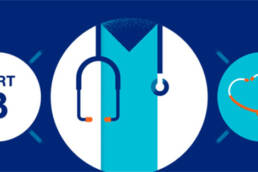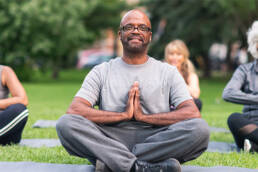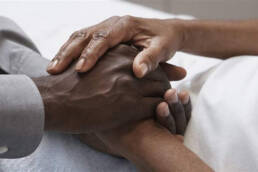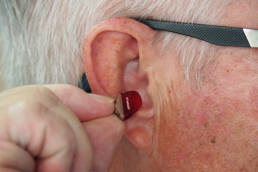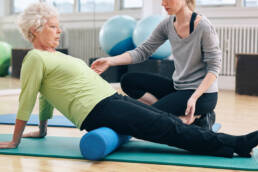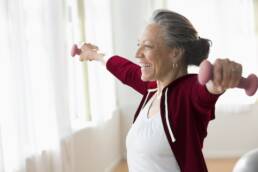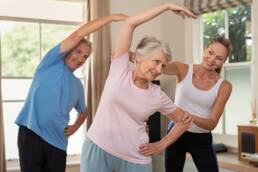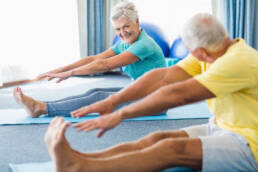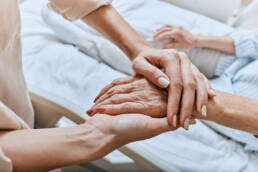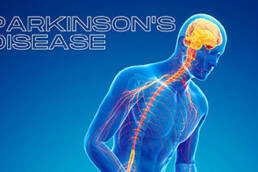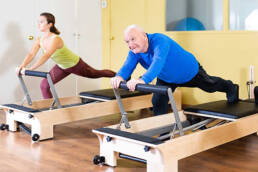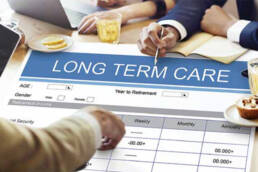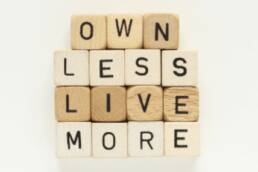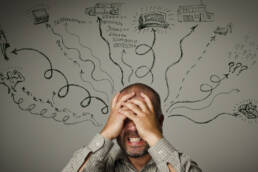Anyone of any age or ability can get stronger and improve their balance. And staying strong and having good balance are especially important for older adults. Why? Because staying strong and practicing balance skills are critical to managing your fall risk.
The stronger your legs, the better your balance, and the less chance you will experience a fall. If you do experience a fall, you are less likely to experience an injury. Research shows that certain exercises are better for older adults to improve strength and balance. These exercises you can do daily, as part of your routine. The best part is they can be done anywhere, anytime, any place.
What are the exercises that older adults can do to help with strength and balance?
First, make sure you are doing the exercises safely and correctly. You may want to work with a physical therapist to choose and teach the best exercises for you. For best results, the exercises should feel somewhat challenging.
Below are exercise suggestions to help you strengthen your leg muscles and improve your balance. It is always a good idea to stand near something sturdy to hold on to, such as a kitchen counter, and have a chair nearby to sit and rest.
Exercises good for leg strength:
Sit to Stand From A Chair Standing Heel Raises Lunges
Exercises good for improving balance:
Standing on one leg Side Stepping Backwards Walking
Start by doing each exercise five to 10 times. Take a short rest (one minute or less) in between exercises. Once you have completed the exercises you can be done or repeat the sequence. Work up to doing each exercise 10 times, twice a day.
Some muscle soreness is normal, your body is telling you those muscles worked. This is a normal response to challenging exercise. But soreness should not limit your ability to do your daily
activities. If it does, this means you may have done too much. Progressing the number of times you do each exercise slowly, and checking how you feel the next day will help you manage muscle soreness.
When starting a new balance exercise, hold on with two hands. When you feel confident in your balance, try holding on lightly with a few fingertips on each hand. Then use only one hand. As your balance skills improve, and you feel steady, you may be able to progress to using no hands.
Is walking a good exercise for strength and balance?
Walking is a great form of exercise with many benefits, but it does not help your legs get stronger unless you are walking up and down hills or stairs. Older adults should combine a strength and balance program with a walking program for the greatest protection against a fall. You should plan on working up to a 30-minute walk, three times a week. When that gets easy, and you want a new challenge, you can walk faster for part of your walk. If you use a walker or cane, make sure to use it when you walk for exercise. A physical therapist can help you determine the best walker or cane for you if you are unsure which to use.
How do I start adding strength and balance exercises into my routine? A good plan is to alternate exercise days with walking
days. On Monday you would do the exercises, Tuesday a walk (ideally 10-30 minutes), and so on.
You will want to start small and build your habits gradually. Writing down a plan and goals for exercise can be helpful for some people. Exercise at a time of day and in a place you en- joy and are the most motivated to move. An exercise buddy or attending a community class is also helpful for some people. Just get started!
When should I see a physical therapist? Sometimes working with a physical therapist is a good idea before starting an exercise program. A physical therapist can be especially helpful if you:
Feel unsteady
Think you may need a walker or a cane
Have an issue that limits your ability to exercise, such as arthritis or an old injury
Have severe pain that makes it difficult to move normally Have fallen in the past and are worried you will fall again
Physical therapists are movement experts who are skilled
at identifying areas where older adults can decrease their fall risk, often this includes recommending a personalized strength and balance program. Their professional training and expertise can assist you in developing the best program for you that can be done when and where it works best for you.










